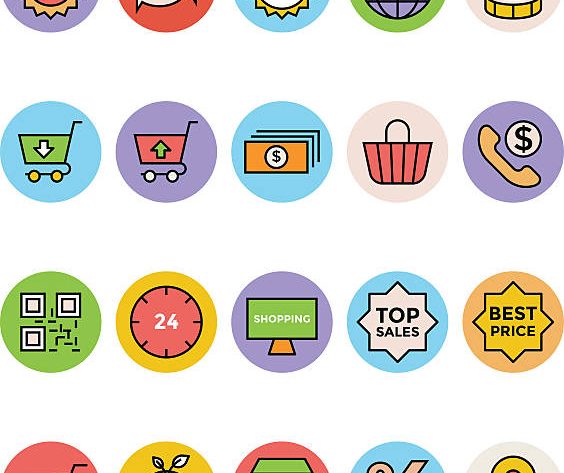Knowing how to sell an item can help boost sales at your store. Once you’ve learned how to market products online, you offer your business the chance to be successful. It is important to try various strategies for marketing to discover your intended people and promote products to these people. In this post, you’ll find 24 helpful marketing strategies for advertising your product and company.
Know Your Audience
It’s no surprise that you should be aware of your target audience before you can promote products to these people. You should research your target market before opening your online store or a new product. Market and competitor research. This study will determine potential audiences and who else is selling similar products, how they sell them, and whether the market is crowded.
If you have identified the people who are the perfect fit for your product, you can start thinking about how to market to them so that you are sure that you can get your product their attention. Examine their behavior as a user, i.e., which websites they are spending time on. Learn about their social media platforms, i.e., what they do and why they utilize social media. Then, plan how you’ll distinguish yourself from your competition in a way your customers can identify. It could be through employing a more informal communication style on your site, creating the brand’s mascot that your target audience will love, or simply offering your product more efficiently than the rest of the market.
Begin with Niche Marketing
Thinking about having an all-purpose store like Amazon and Walmart is always exciting. However, please take your time to secure that first purchase. Use a neutral name for your brand that doesn’t reference the particular niche. When building an online business, you should focus on developing a brand centered on a distinct area of expertise. With niche marketing, it will be much easier to pinpoint and identify potential customers and partners to work with. It can also assist you in being an authority in your area since you’ll know the best marketing strategies for the people you’ve targeted. For example, you may start as a jewelry shop. As your jewelry business begins to increase, you could expand to other relevant categories, like jewelry for bridal, hair accessories, or fashionable accessories like sunglasses and scarves. Determining which market to target is easier once you understand your customers. Why did they purchase your jewelry? Was it to celebrate a wedding, prom, or for everyday use? Once you better understand your clients, you can test other relevant products to attract new customers and grow your business. In addition to marketing, branding and positioning for the online store are also because of niche marketing. This is because your brand profile grows more credible with time in the area you’ve selected.
Build Strong Customer Relationships
Give your unhappy customers a warm welcome, and treat your satisfied customers as if they were your best friend. If customers are dissatisfied, you are responsible for taking the necessary steps to solve the problem and brighten their day. Imagine you are happy about a purchase but then notice that the quality isn’t as good or the size isn’t what you expected. Then you thought that customer service could not solve the issue promptly. You’ll likely be frustrated and depressed. That’s precisely how your unhappy customer is feeling. Offer a refund or an unintentional gift, and make every effort to make them smile again since a bad incident isn’t going to end the relationship, especially if you’ve put in the effort to repair it.
Let’s discuss happy customers. Are you able to respond to satisfied customers? Most store owners don’t! However, they should, and you should, too. When the customer constantly communicates with your business, you should build an ongoing relationship with them. Reward customers who leave positive reviews. Answer emails from customers that affirm their love for the product. By building relationships with happy customers, you start making them loyal. When customers are dedicated to you, they’ll spend more on your shop and become the kind of person who promotes your product on your behalf.
Elicit an Emotional Response
For online sales, triggering an emotional reaction to your clients is essential. This can be achieved by using urgency and scarcity strategies in your store, like countdown timers, showing limited quantities, and offering flash sales. This will allow customers to purchase immediately. You could also trigger an emotional response in your content, such as the descriptions of products. If your product can solve some issue, naming the case and describing the way your product addresses the issue can encourage users to solve the problem by using your product. Your content can also generate urgency using words such as “right now” or “today. The images on your website could cause an emotional reaction. From the emotions in your model’s face to the colors you employ on your site, it is possible to guide visitors to your sale funnel. Do some prior research about the psychology of color to ensure you create the right feelings on your site. The first step is to know your audience.
It is a must to connect with your audience emotionally. Whether you’re working on traditional or unique business concepts, You must identify an emotion-based selling factor that will appeal to your clients and promote your content. Please use the emotional connections you establish with the customers you serve to gain their trust and demonstrate to them by your actions or content your actions, as a brand, that you are concerned about the things they care about. Find out what resonates with your target segment, and then create content that catches their attention and inspires customers to take action.
Personalize the Experience
Personalization has been shown to boost online marketing companies earning up to 20% more sales by personalizing their site. You can customize the shopping experience in a variety of ways. You could suggest products based on the customers’ experience browsing, such as redirecting them to your site, sending emails with their name, or welcoming them on your site, such as “Welcome back, Jim, to the customer who logs in. You can also offer recommended sizes based on the customer’s weight and height to aid them in determining their ideal fitting.
Personalization is not limited to users having their names appear on emails. It’s about offering relevant content to them. Personalization is about providing ease for your customers. It must create the impression that they’re fascinated or excited by the content when a webpage or email is delivered to them. Personalizing your experience for your customers will make them more likely to purchase. Personalizing marketing in the market is the path to building better customer relationships.




